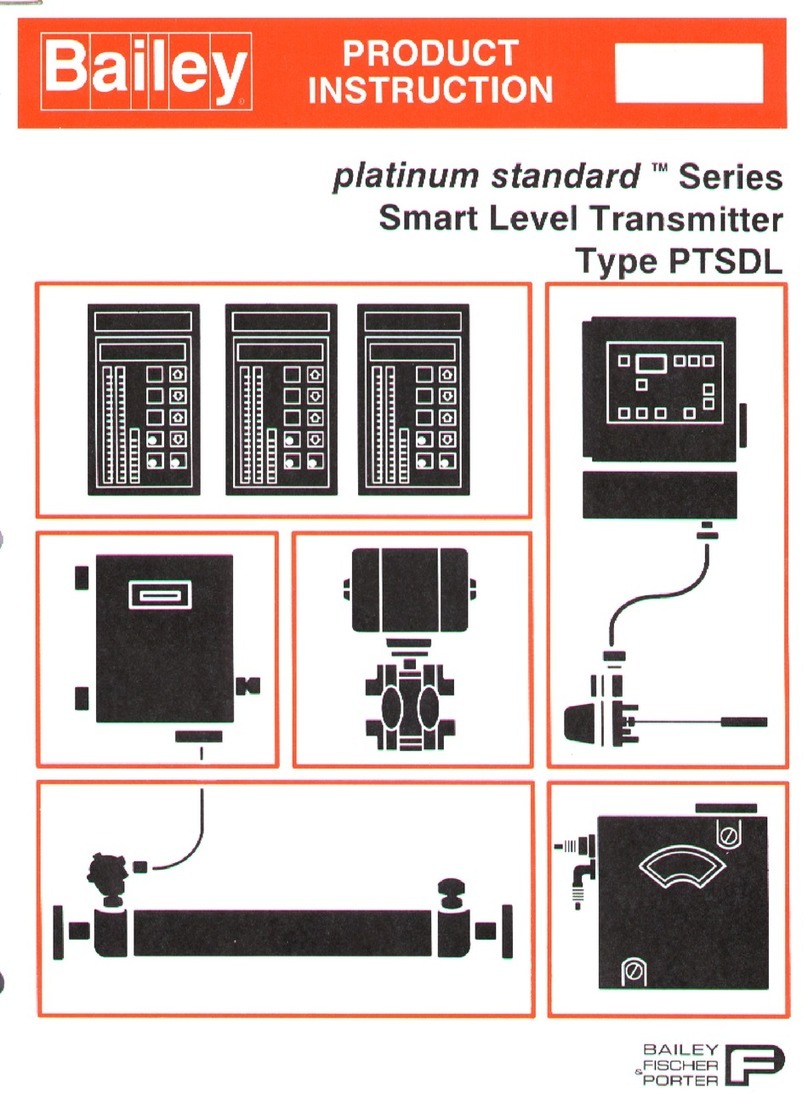
iv WBPEEUI110506A0
Table of Contents (continued)
Page
SECTION 4 - CALIBRATION (continued)
D/A adjustment (fine tuning the analog loop)..................................................4-3
Digital Mode Calibration........................................................................................4-4
RERANGING THE ANALOG OUTPUT............................................................................4-5
REZERO PROCEDURE ................................................................................................4-6
VERIFYING CALIBRATION WITH THE EZ CAL OPTION................................................4-6
SECTION 5 - OPERATING PROCEDURES................................................................................5-1
INTRODUCTION ..........................................................................................................5-1
OPERATOR INTERFACE .............................................................................................. 5-1
CONFIGURATION PROCEDURE ..................................................................................5-1
ID Tag ...................................................................................................................5-1
Select Mode...........................................................................................................5-1
Channel Number...................................................................................................5-2
Transmitter Type...................................................................................................5-2
Output Type..........................................................................................................5-2
Output Action .......................................................................................................5-2
Damping Adjustment.............................................................................................5-2
Primary Engineering Units.....................................................................................5-3
Primary Upper and Lower Range Values................................................................5-3
Startup and Failure Conditions .............................................................................5-3
Secondary Engineering Units.................................................................................5-4
Secondary Lower and Upper Range Values ............................................................5-4
Cell Temperature Alarm Limits..............................................................................5-4
Get Config Key.......................................................................................................5-4
Send Config Key .................................................................................................... 5-5
View Config Key.....................................................................................................5-5
OPERATIONAL FUNCTIONS.........................................................................................5-5
Special Feature Key...............................................................................................5-5
Fix Output/Cancel Fix Output........................................................................5-5
Local LCD Setup .............................................................................................5-5
Standard Configuration...................................................................................5-5
Output Key............................................................................................................5-6
Monitor Output...............................................................................................5-6
Monitor Input..................................................................................................5-6
Monitor Cell Temperature................................................................................5-6
Monitor Secondary Engineering Units..............................................................5-6
Status Key.............................................................................................................5-6
F1 Key...................................................................................................................5-7
CONFIGURATION LOCKOUT PROCEDURE..................................................................5-7
SECTION 6 - TROUBLESHOOTING...........................................................................................6-1
INTRODUCTION ..........................................................................................................6-1
ERROR MESSAGES AND CORRECTIVE ACTION .........................................................6-1
SECTION 7 - MAINTENANCE.....................................................................................................7-1
INTRODUCTION ..........................................................................................................7-1
PREVENTIVE MAINTENANCE SCHEDULE...................................................................7-1
PREVENTIVE MAINTENANCE PROCEDURES ..............................................................7-2
Checking Connections...........................................................................................7-2
Indicator Window Cleaning....................................................................................7-2




























